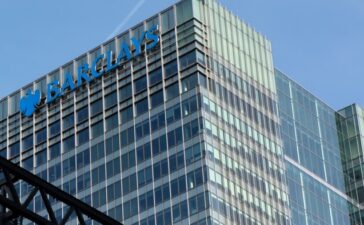As we enter 2025, ElmTree Funds is ready to capitalize on a busy 2024.
The real estate investment firm — which specializes in financing build-to-suit, net-lease industrial real estate — closed $485 million in acquisition transactions that secured the firm more than 2.3 million square feet of new property, Commercial Observer can first report.
MaCauley Studdard, managing director at ElmTree Funds, told CO that each acquisition was either a newly constructed distribution asset or part of a supply chain revitalisation plan by sponsors. He added that each property holds long-term leases of 10-plus years with 3 percent annual rental escalations.
“Each asset has its own story of why it’s important to a tenant,” he said. “But when thinking about them regionally, we really see growth in the Midwestern markets and the Southeastern, south-central markets, which is where these assets are located.”
The properties are located in Southern California, Iowa, Michigan, Mississippi, Missouri, Tennessee and Texas.
James Koman, CEO and founder of ElmTree Funds, said in a statement that the series of acquisitions highlights his firm’s ability “to execute a disciplined investment strategy in a challenging market.”
Studdard added that ElmTree and its sponsors focused on labor force dynamics and land availability when deciding where to pursue these acquisitions, and emphasized that the Midwest and south-central regions of the country were best for that particular strategy. Moreover, the firm’s purpose-built, build-to-suit financing expertise made ElmTree a natural partner for new development projects in the sector.
“We’re seeing companies building new assets because they provide greater efficiencies to their supply chain, higher clear heights, correct column design, really the right layout for racking automation workflow,” said Studdard, describing key industrial characteristics.
He said that by building industrial-specific plans for operators, the pre-development process usually takes more than two years before workers can break ground.
“It’s working with the tenant to determine what market they want to be in, which submarket and site makes the most sense, and what the labor force in the market is,” he said. “The site’s proximity to infrastructure like railroads, highways, airports can all drive location decisions for tenants, and once a site is picked out. … It’s building the facility to their specs.”
The industrial sector experienced some struggles in 2024. CO previously reported that the sector saw only 80 million square feet of leasing through the first three quarters of 2024, which was down 60 percent from the same time last year. However, demand for newer space exceeded 180 million square feet.
Much of the issues come from the surge of construction activity in 2021 and 2022, when interest rates were low and capital markets were frothy under low interest rates. But when inflation appeared in 2022 and 2023, it forced capital markets to tighten up and for both construction and leasing activity to slow down by 2024 amid interest rate uncertainty, according to Studdard.
“We had a supply and demand imbalance, as construction activity of 2021 and 2022 was delivered into the market in 2023 and 2024, so we saw vacancy pulled up and rental growth slow down,” he said.
Studdard said with more market stability, deliveries are expected to reach 200 million square feet in 2025, and that vacancies should probably compress later in the year with low, single-digit rental growth.
“It pushes us into a more liquid environment, and we’re also seeing a lot more tenants move forward with projects that were also on hold in 2024,” he said. “We’re generally optimistic about the sector … and the acquisition potential of the [build-to-suit market] in 2025.”
Brian Pascus can be reached at bpascus@commercialobserver.com

















